Struggling to navigate Vancouver public transport? You’re not alone – even us locals are still adjusting to the intricacies of the Vancouver public transportation system.
I can empathize with the challenges travelers like you face while maneuvering through the city’s elaborate network of Skytrain (our subway/metro), bus, and ferry services.
Fortunately, you can put your worries aside, as I’ll be sharing my years of experience (including a few mishaps!) to guide you through the city stress-free!
Here’s my comprehensive Vancouver public transport mega guide.
Index
- Overview
- Vancouver transit fares + zone map
- Transit passes
- Skytrain
- Buses
- The Seabus
- False Creek Ferries
- Bike sharing and rentals
- The West Coast Express
- HandyDART
- Safety on Transit
- FAQs
Vancouver Public Transport

People always ask me how easy it is to get around Vancouver without a car. I often hear people telling me that they’d heard that you absolutely need a car or taxi to get around town.
While having wheels definitely comes with its advantages, I’m here to show you that these people are wrong.
With a few useful travel hacks and a little patience, you’ll find that Vancouver public transit is clean, efficient, and affordable. You’ll have no problem accessing all of the city’s top attractions.
First, let’s cover the basics.
Vancouver Public Transportation Options
Translink is the regional transportation authority that oversees the Vancouver public transport system.
Translink operates a system that includes the following:
- The Skytrain: Greater Vancouver’s Metro system
- The Coast Mountain Bus Company: A provider of an extensive network of bus routes
- The Seabus: A downtown to North Vancouver passenger ferry
- The West Coast Express: A commuter train that links downtown with Vancouver’s Eastern suburbs
Additionally, the city is one of the most bike-friendly cities in North America. You can use the regional bike share system known as Mobi or private bike rentals to access our vast network of bike lanes. Or better yet, take them for a spin on the legendary Seawall.
Lastly, two private companies, Aquabus and False Creek Ferries, provide a small passenger ferry service throughout False Creek.
Vancouver Transit Fares
The cost of your trip depends on four main factors:
- Distance travelled: (number of zones)
- Method of payment: (cash, compass card or day pass)
- Mode of transport: (transit option used)
- Time of purchase: (weekday, evening or holiday)
Each factor will be discussed in detail below, but in the meantime, here is a quick look at the fare list.
Cash Fares (cash/contactless payment)
Type 1-Zone 2-Zone 3-Zone
Adult $3.15 $4.55 $6.20
Concession $2.10 $3.10 $4.25
Compass Card (stored value)
Type 1-Zone 2-Zone 3-Zone
Adult $2.55 $3.75 $4.80
Concession $2.10 $3.10 $4.25
Monthly Passes
Type 1-Zone 2-Zone 3-Zone
Adult $104.90 $140.25 $189.45
Concession – – $59.95
Day Passes
Type All Zones
Adult $11.25
Concession $8.85
*Concession rates apply to seniors (65+), children (5-13) and youth (14-18) with valid ID.
Translink Zone Map

There are four transit zones in the Metro Vancouver area:
- One: Encompasses the entirety of the City of Vancouver, including Downtown and the city’s Southern peninsula.
- Two: Covers the neighbouring suburbs on the North Shore, Richmond, Burnaby, and New Westminster.
- Three: Constituted of the more distant suburbs to the East, including; Delta, Surrey, Langley, Coquitlam, and Port Moody
- Airport: Includes the three stations located on Sea Island, including YVR-Airport.

Vancouver Airport Transportation
In addition to any ticket purchased that departs from Sea Island, all travellers are required to pay the $5 YVR add fare surcharge.
This surcharge is not levied for trips to the airport from the City Centre.
For more information on travel from YVR, check out our Airport Transportation guide.
Mode of Transport
The Skytrain and Seabus require a 1, 2, or 3-zone ticket depending on the time of day and travel distance.
However, it is important to note that regardless of trip duration all bus trips are considered one-zone fares.
Translink Methods of Payment
All forms of Vancouver transit can accommodate here are four methods of payment:
- Single/Cash Fares: Cash or credit/debit/mobile wallet purchase of a single fare.
- Stored Value (Compass Card): Vancouver’s reloadable fare card.
- Day Pass: 24 hours of service across the transit system.
- Monthly Pass: Provides unlimited access for one month.
Each method of payment will be discussed in detail in the corresponding sections below.
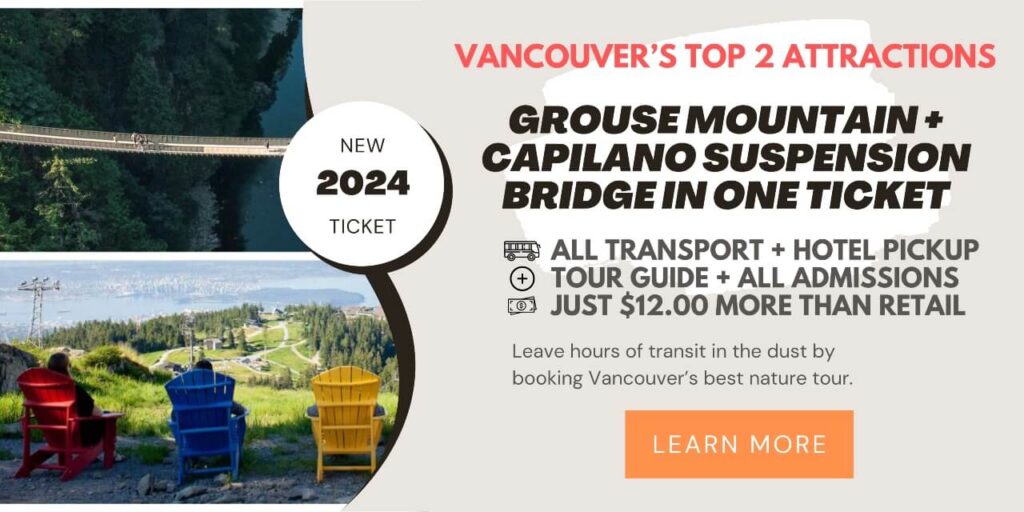
Vancouver Transit Single/Cash Fares
With a single fare, you can transfer as often as you like between the Skytrain, buses, and Seabus within 90 minutes, with one notable exception listed below.
There are three methods of purchase for single fares:
- 1) Cash From a Compass Vending Machine (CVM): You can purchase a single fare (called a Compass Pass) from vending machines at any Skytrain or Seabus station or at most London Drugs locations.
- These fares can be purchased with cash, debit card, or credit card and allow for transfer across all modes of transport for up to 90 minutes. Single-fare passes expire at the end of the day of purchase, even if not used.
- 2) Cash Aboard a Bus: Cash payments aboard buses require an exact coin fare. This fare enables the user to have unlimited use of the Metro Vancouver bus system for up to 90 minutes with the acceptance of a transfer.
- Unfortunately, this does not extend to the Skytrain system. A Compass Card or Compass Pass is required for free transfer to Skytrain, Seabus, or West Coast Express services.
- 3) Tap to Pay: You can tap your contactless credit card (Visa or Mastercard), debit card or mobile wallet on any card reader at the front of the bus or Skytrain fare gates to begin your journey.
- On the Skytrain, be sure to tap your card or device when transferring/exiting the station (not required on buses). Otherwise, you may incur additional charges.
Vancouver Transit Passes
Compass Card
The Compass Card is Vancouver’s easy reloadable fare card that works on Translink’s entire Skytrain, Bus, West Coast Express and Seabus network.
As displayed in the fare table above, the Compass Card offers users travel at a discounted rate relative to regular cash fares.
Consequently, we strongly recommend a Compass Card purchase if you expect to use the transit system extensively.
Types of Compass Card
Three types of Compass cards are available for purchase in addition to the single-fare Compass Pass discussed above.
- 1) Adult Compass Card: The most popular option, this card can be loaded with stored value or pass products (daily or monthly passes). They are available online, at Compass Vending Machines (CVMs), or at select retail locations (see below.)
- 2) Concession Compass Card: The concession Compass Card offers discounted rates of travel for seniors aged 65 and over, children between 5-13 and youth 14-18 with valid photo ID (children under five ride free).
- They are available at the Compass Service Centre at Stadium-Chinatown Station, the West Coast Express Office, and select retail locations.
- 3) Compass Card Wearables: In addition to the traditional card format, the Compass Card is also available in recently introduced wristband and mini(keychain) versions. Both options can be purchased in adult and concessionary formats.
- Wearables are only available at the Compass Customer Service Centre at Stadium-Chinatown Station or the West Coast Express Office at Waterfront Station. They function exactly like the traditional card format and can be obtained for the same $6 deposit.
How do you purchase a Compass Card?
There are four different ways to purchase your card.
- 1) Compass Vending Machines (CVM): Located in all Skytrain, Seabus and West Coast Express stations and the Horseshoe Bay and Tsawwassen ferry terminals. Concession Compass Cards are not available at CVMs.
- 2) Local Retailers: Compass Cards are available at select retailers such as London Drugs, Save On Foods, 7-11, Shoppers Drug Mart and Safeway. This is the preferred option for the purchase of concession Compass Cards.
- Looking for an option close to you? Check out Translink’s find a retailer page.
- 3) Online: Since online purchase requires delivery, it is ill-suited for most tourists. However, if you have a suitable address to which you can send your pre-loaded Compass Card, they are available for purchase on the Translink website.
- For more details, click the link here.
- 4) The Compass Customer Service Centre: Located at Stadium-Chinatown Station. There is a refundable $6 deposit required to purchase a Compass Card. At the end of your trip, this amount can be returned to you, along with any remaining balance.
How do you use a Compass Card?
The Skytrain, Seabus & West Coast Express
Simply tap your card on the card readers located at the entrance to the station. This will automatically initiate a three-zone fare.
Once your journey is over, be sure to tap out upon exiting the station. And remember, this also applies to key transfer points.
Tapping out ensures that the proper amount will be deducted from your stored value. Otherwise, you’ll be dinged for a three-zone fare.
Vancouver Buses
When travelling by bus, tap on the card readers located on board at the front of the bus or on the rear doors upon B-line or Express buses.
You will only be charged for a one-zone journey, as the entire Coast Mountain bus network is considered one zone.
Consequently, you are not required to tap out at the end of your journey.
Vancouver Day passes
Purchase of a Vancouver transit day pass grants unlimited access to the Skytrain, bus, and Seabus networks on the day of purchase.
The passes cost $11.25 for adults or $8.85 for seniors and youths.
Unlike many cities offering passes with validity for 24 hours after validation, Vancouver transit day passes expire at the end of the service day they are purchased, even if unused.
For this reason, we only recommend purchasing a day pass Vancouver if you plan on getting an early start and need to travel extensively throughout multiple zones.
There are two ways to buy day passes:
- 1) Purchase a Day Pass Ticket: You can purchase a day pass from a Compass Vending Machine (CVM) located within any Skytrain, Seabus West Coast Express Station or any select retailer offering Compass products.
- 2) Load a Day Pass onto a Compass Card: You can add a day pass to your Compass Card online or at any CVM located within any Skytrain, Seabus or West Coast Express station.
*Note that the day pass will be used before any stored value already on your card, so only buy one when you intend to use it.
Now that you are well versed on the system’s fares, let’s get familiar with the various travel options on the Vancouver public transport system.
Still confused? Hit me up in the comments below.
The Skytrain
The Skytrain is the fully automated metro component of the Vancouver public transport system.
The system’s name is derived from the fact that the majority of its tracks are elevated well above the streets below.
This provides users with panoramic views of Vancouver’s skyline and the North Shore Mountains.
Fast, efficient, and cost-effective, Skytrain is fully equipped with all of the modern amenities regarding security and handicap accessibility.
This is simply the best way to get around Vancouver. Consequently, I highly recommend using the Skytrain as your primary method of using the Vancouver public transport system.
Skytrain Route Map
The Skytrain has three fully integrated lines, as displayed in the route map below:
- Canada Line (blue)
- Expo Line (navy)
- Millenium Line (yellow)
The Canada Line
Opened for the 2010 Olympics, the Canada Line is the newest line in Vancouver’s metro system.
As the principal method of airport transportation, it will likely be your introduction to the Vancouver public transportation system.
The Canada Line has two main branches:
- Richmond-Brighouse: This branch operates North-South between Waterfront Station in Downtown Vancouver and Richmond-Brighouse Station in the suburb of Richmond, BC.
- This means it provides service to most Vancouver airport hotels, the River Rock Casino and the wealth of dining and shopping options throughout Richmond.
- YVR-Airport: The line branches off from Bridgeport Station in Richmond and heads to YVR-Airport Station on Sea Island, which will form most visitors’ introduction to the city of Vancouver. In addition to YVR, this branch services the popular McArthurGlen Outlet Centre via Templeton Station.
If you’d like a more detailed look at the Canada Line, including schedules, hop on over to the Canada Line web page.
The Expo Line
The original Skytrain route was constructed for Expo ’86; this line contains two branches that provide service from Downtown through East Vancouver to the city’s Eastern suburbs.
From a tourist perspective, both branches will service the major sites and attractions located in Chinatown, Gastown, and Vancouver’s Little Italy, located on Commercial Drive.
It also provides service to Pacific Central Station, which offers the Vancouver to Seattle Train, the Rocky Mountaineer, the Victoria Bus and coach service to Whistler.
Most tourists will not venture far enough East to reach the divergence in lines. So unless you are heading to Surrey or New Westminster, by all means, jump on either train.
The Expo Line has two main branches:
- King George: The first branch operates from Waterfront Station in Downtown Vancouver and heads South-East through East Vancouver, Burnaby and New Westminster before terminating at King George Station in the suburb of Surrey, BC.
- Lougheed: The second route follows the same route from Waterfront Station but after Columbia Station in New Westminster branches off and heads North-East towards Production Way in Burnaby.
For detailed schedules and maps, visit the Expo Line website.
The Millennium Line
The aptly named Millennium Line was opened shortly after the new millennium in 2002. As the line does not enter Downtown Vancouver, it will likely be of little use to most tourists.
It heads East from VCC-Clark Station in East Vancouver through Burnaby before heading North-East across the suburbs of Port Moody and Coquitlam. The newly opened Evergreen Extension will then take you to the terminus Lafarge Lake-Douglas Station.
*Construction of an extension from VCC-Clark down Broadway to Arbutus (and eventually UBC) are currently underway. The line is scheduled to open in 2026.
Check out Translink’s Millennium Line site for more details.
Skytrain Hours
The three Skytrain lines have similar schedules with a few slight variations:
First Train (Weekdays)
- Canada Line: 4:48 am (Waterfront-YVR) / 5:07 am (YVR-Waterfront)
- Expo Line: 5:32 am (King George-Waterfront) / 5:08 am (King George-Waterfront)
- Millennium Line: 5:30 am (Eastbound) / 5:04 am (Westbound)
Last Train (Weekdays)
- Canada Line: 1:05 am (Waterfront-YVR) /12:56 am (YVR-Waterfront)
- Expo Line: 1:16 am(Waterfront-King George) / 12:38 am (King George-Waterfront)
- Millennium Line: 1:22 am (Eastbound) / 1:00 am (Westbound)
The above tables are offered only as a rough guide. Please consult Translink for exact schedules and interactive maps for all three lines. And always use Google or Apple Maps for specific recommendations from your place of lodging.
Each line offers peak hours service frequency of around 3-4 minutes. While this may extend to 6 or 10 minutes later in the day, you can rest assured that’ll you’ll never be waiting long.
Saturdays
- Canada Line hours stay the same
- The Expo and Millennium Lines begin service later, at 6:48 am and 6:30 am, respectively, with the last train running at regular hours
- All lines offer reduced service frequency
Sundays/Holidays
- Canada Line hours don’t change
- The Expo Line offers service from 7:48 am -12:16 am
- The Millennium Line runs from 7:30 am-12:29 am
- Frequency is reduced on all lines
Skytrain User Tips
- Use stored value: We recommend purchasing a Compass Card for ease of use and, most importantly, to receive discounted rates.
- Avoid public transit day passes: Day passes don’t provide the best value unless you get an early start and plan on travelling extensively throughout zones 2 and 3.
- Bring your things: The Skytrain has plenty of room for luggage, bicycles, and skis/snowboards. Plus, there are elevators in every station.
- Grab a window seat: If travelling outside the city centre on the Expo or Millennium Lines or in Richmond on the Canada Line, you will be afforded spectacular views of Vancouver’s skyline, the North Shore Mountains and the Fraser River.
Vancouver Buses

The Vancouver bus network is extensive and offers efficient, safe, and reliable service throughout Vancouver and its many suburbs.
As valuable a transportation tool as the Skytrain is, it simply does not offer the same degree of coverage as many metro lines in comparably sized European and Asian cities.
As a result, the use of Vancouver’s bus network will become a necessity for travellers who wish to explore some of Vancouver’s more distant attractions in areas like Kitsilano and UBC.
Vancouver Bus Routes
Vancouver’s bus network operates on a grid system, with most routes generally terminating in Downtown Vancouver or at the University of British Columbia.
Trolley buses generally run North-South along the main thoroughfares, with diesel buses running East-West and usually terminating at the UBC bus loop.
Three specific bus routes will be of most use to visitors to Vancouver: The 99 B-Line, the Rapid Bus and the NightBus.
Vancouver Express Buses
The 99 B-line and the RapidBus provide a network of express routes that offer fast, reliable and high-frequency service along a number of main arteries in the Metro Vancouver area. There are currently five different express routes on offer:
- The #99 B-Line: Runs East to West from Commercial Drive and Broadway to its terminus station at the University of British Columbia. The #99 will likely be the most important express route for tourists, offering service to popular Vancouver neighbourhoods like Commercial Drive (Little Italy), Fairview, Kitsilano, and UBC.
- The route connects to the Expo Line at Commercial Drive-Broadway Station and the Canada Line at Broadway-City Hall station.
- For schedules, visit Translink’s B-line next bus page.
- The RapidBus: The new RapidBus program offers fewer stops and up to 20% faster service than local buses. There are currently four routes on offer: R1 King George Blvd (Surrey), R3 Lougheed Hwy (PoCo, Pit Meadows, Maple Ridge), R4 (41st Ave from UBC-Joyce), and R5 Hastings (DT to SFU.)
- For more information and a complete list of RapidBus Schedules, visit the Translink web page.
- Vancouver Night Bus: Provides Night Bus service from a hub at the intersection of Granville and West Georgia after the Skytrain has closed. After 2 am, the buses leave every 30 minutes from one safe, secure, well-lit downtown location 7 days a week. You can tell it’s a NightBus by the half-moon symbol beside the number on the bus stop sign and the N in front of the route number (N9, N19 etc.).
- For all the info, check Translink’s Night Bus page.
Other Key Vancouver BusRoutes
- #19 Stanley Park: Runs along Pender Street to the heart of Stanley Park
- #22 Knight: Runs east through downtown from Burrard Station towards Chinatown
- #4 UBC: From Granville Street downtown through Kitsilano to UBC
- #236 Grouse: Lonsdale Quay in North Vancouver to Grouse Mountain, including the Capilano Suspension Bridge.
- #257 Horseshoe Bay Express: Express service to the Horseshoe Bay Ferry Terminal
- #620 Tsawwassen: Bridgeport Station in Richmond to Tsawwassen Ferry Terminal
For further information on routes and schedules, visit the Translink bus page.
The Seabus

The Seabus is a passenger-only commuter ferry between Waterfront Station in Downtown Vancouver and Lonsdale Quay in the suburb of North Vancouver.
The service will be useful to those who would like to visit the Capilano Suspension Bridge and Grouse Mountain or enjoy the bars, restaurants and Vancouver craft breweries in North Vancouver’s beautiful Lonsdale neighbourhood.
Seabus Fares
The Seabus is subject to the same fare structure as other forms of transit on the Vancouver public transport system and is thus considered a two-zone fare.
As such, a one-way ticket costs $4.55 or $3.75 with a Compass Card.
Sailing Times
The 12-minute long sailings depart at 15-minute intervals during peak hours (6:45 pm-9:16 pm on weekdays) and every 30 minutes before or after.
Departure intervals remain the same during weekends. However, peak hours are reduced by 2 hours (9:02 pm-9:02 pm).
First/Last Sailing
From Waterfront First Last
Weekdays/Saturday 6:16am 1:22am
Sunday/Holidays 8:16 am 11:16 pm
From Lonsdale First Last
Weekdays/Saturday 6:02am 1:00am
Sunday/Holidays 8:02 am 11:02 pm
Connections
The Seabus connects with the Canada and Expo Lines of the Skytrain at Waterfront Station.
At Lonsdale Quay in North Vancouver, there is a public market, hotel, and bus loop connecting the attractions on the North Shore, such as:
- Grouse Mountain: Bus #236 (Bay 8)
- Capilano Suspension Bridge: Bus #236 (Bay 8)
- West Vancouver: Bus #239 (Bay 6)
- Lonsdale: Bus #230 (Bay 3)
Vancouver’s Beautiful North Shore is an attraction in its own right, so don’t let the distance get in the way.
Whether you’re skiing the local mountains, hiking up the famous Grouse Grind, or hitting one of Lonsdale’s numerous bars or restaurants. It’s a big part of any Vancouver itinerary.
The False Creek Ferries

The Seabus isn’t the only commuter ferry service offering travel across Vancouver waters.
Two small private companies offer ferry service amongst a variety of stops littered throughout False Creek. This allows visitors to travel from downtown to the attractions on Vancouver’s Southern peninsula.
This includes Granville Island, Science World and some of the city’s best beaches. You can also hit many of the best museums in Vancouver (Museum of Vancouver, Planetarium & Maritime Museum) located in the neighbourhood of Kitsilano.
The tiny ferries offer a brief reprieve from the urban environment and present travellers with stunning views of the Vancouver skyline, the North Shore Mountains and False Creek’s glittering waters.
The Ferries run from roughly 7:00 am to 9:00 pm, depending on season and station.
Be aware that Compass Cards and other Translink fare products are not accepted aboard the ferries. This is due to the fact the ferries are not part of the Vancouver public transport system.
*Cash is the preferred method of payment on board.
Need more info? Visit the Aquabus and False Creek Ferries websites.
Vancouver Bike Share
A bike share system offers public bicycles for short-term use to users for a small fee or subscription.
Vancouver has recently implemented its own system, allowing users to make use of the city’s extensive network of bike lanes in addition to the world-renowned Seawall as a transportation tool.
Mobi

A bike-sharing network administered by the City of Vancouver, Mobi allows users to borrow a bike from any of over 100 stations and simply return it to any station in the network once they’re finished.
Each station also comes equipped with wifi, a valuable tool for visitors. Just be aware that Compass Cards and day passes do not apply, as Mobi is not considered part of the Vancouver public transport system.
To gain access to Mobi, users must sign up online or pick up the Mobi app in the App Store or Google Play.
Bike Share Payment Options
- 24-hour pass: $19.00
- 30-day pass: $39.00
- 365-day pass: $139.00
The 24-hour pass has traditionally been the most popular with tourists.
However, recent price increases have made the 30-day pass a more viable option for those who intend to use the system extensively. Just remember that the 30-day pass is auto-renew. So be sure to cancel before you leave town.
Mobi Things to Know
Each pass entitles users to 30 minutes of use of their bicycle.
The bike must then be returned to any Mobi station. If you download the Mobi app, you’ll see the location of all stations and the number of bikes present.
Otherwise, a $7.50 overage fee per 30-minute period (i.e. $15.00 for an hour, $22.50 for 1.5 hours).
However, the duration of your pass will entitle you to as many 30-minute rides as you would like within the duration of your pass.
Vancouver Bike Rentals
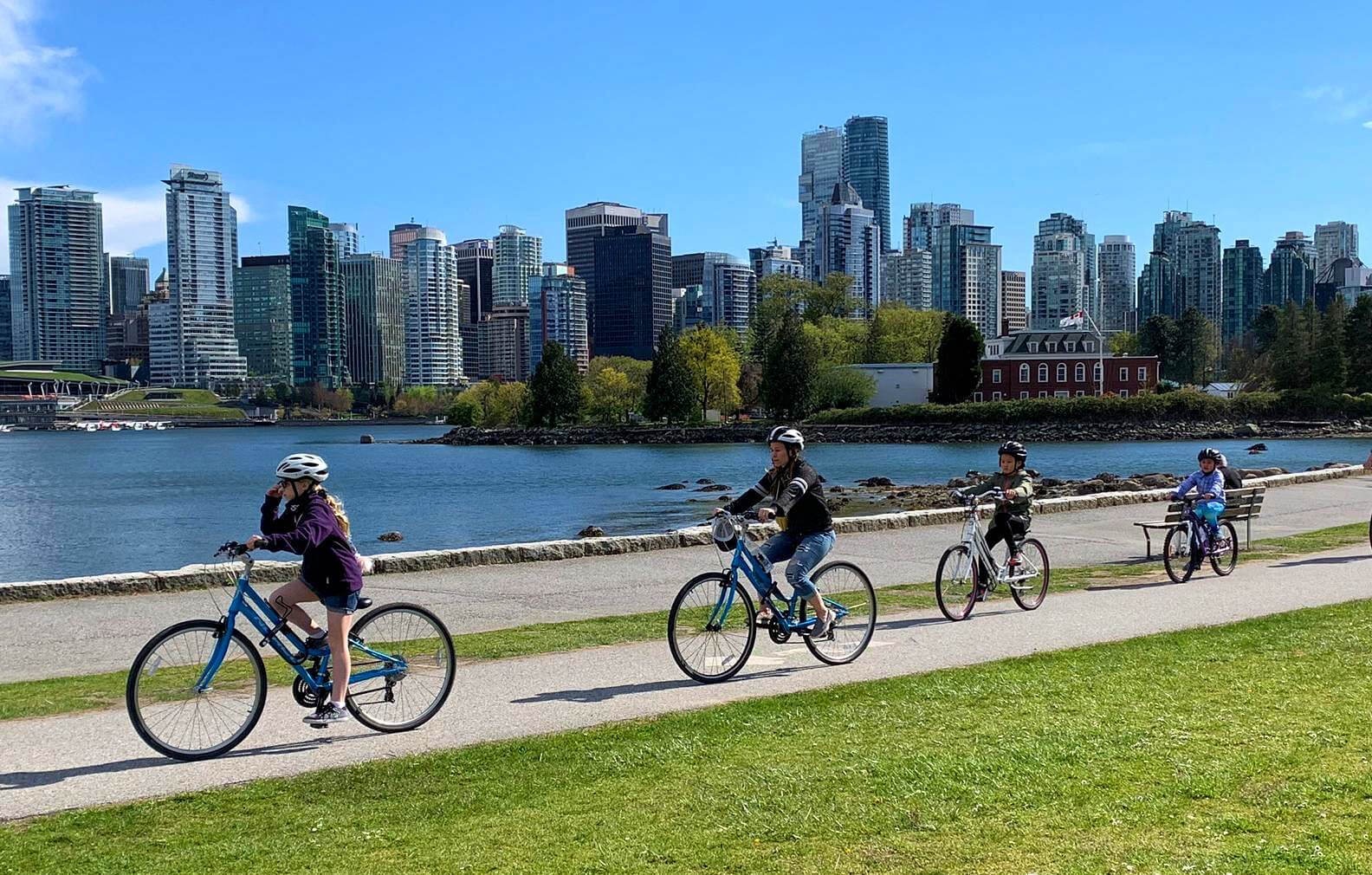
Mobi is aimed predominantly at local commuters, not tourists like you.
So, if you’re looking to enjoy a bike ride around Stanley Park or the Seawall, we strongly recommend using one of the city’s numerous bike rental companies.
Then you can take your time and enjoy the area’s beautiful views, Vancouver’s best beaches and attractions. Prices start at $13.00 using our Tiqets link below:
The West Coast Express

The West Coast Express is a commuter rail service that connects Downtown’s Waterfront Station with the distant North-Eastern suburb of Mission.
A one-way trip takes 75 minutes and costs between $11.25 and $13.40, depending on the distance travelled. Seniors and youth receive a slight discount.
The train offers a number of stops along the way
- Moody Centre*
- Coquitlam Central*
- Port Coquitlam
- Pitt Meadows
- Maple Meadows
- Port Haney
- Mission
*Denotes stop that intersects with the Millennium Line of the Skytrain.
The service runs five times daily from Monday to Friday and only operates during the peak morning and evening rush hour.
As a result, it is not of much value to most visitors to the region and primarily targets suburban commuters.
West Coast Express Info
After tapping into the WCE, you’ll have 120 minutes before your trip expires. You can transfer across the entire Vancouver public transport system off of a single fare. And remember, your travel time begins when you tap your card or ticket to enter a transit area.
If you transfer onto WCE via other modes of transit, you’ll need to pay an additional fare.
Travelling to the burbs and needing it? Check out Translink’s West Coast Express page for fare information and schedules.
HandyDART

HandyDART is a service provided by TransLink for added Vancouver public transport, offering door-to-door, shared-ride transportation for individuals who require assistance and cannot navigate traditional public transit independently.
HandyDART eligibility is open to individuals with physical, sensory, or cognitive disabilities who require assistance to use regular public transit.
Children under 12 can also register for HandyDART services, and those registered or accompanied by a registered customer can travel for free without the need for fare products or identification.
Here are the prices for HandyDART through compass cards.
Type 1-Zone Cash 1-Zone Monthly Pass 1-Zone Stored Value
Adult $3.15 $104.90 $2.55
Concession $2.10 $59.95 $2.10
Booking and Preparing for Your Ride
- Subscription trips: Recurring journeys involving travel to and from identical destinations at consistent times, either on a daily or weekly basis.
- Casual trips: Journeys undertaken as a singular occurrence.
To reserve or cancel a HandyDART trip, dial 604.575.6600 for local calls or 1.844.475.6600 for toll-free calls.
Safety on Transit
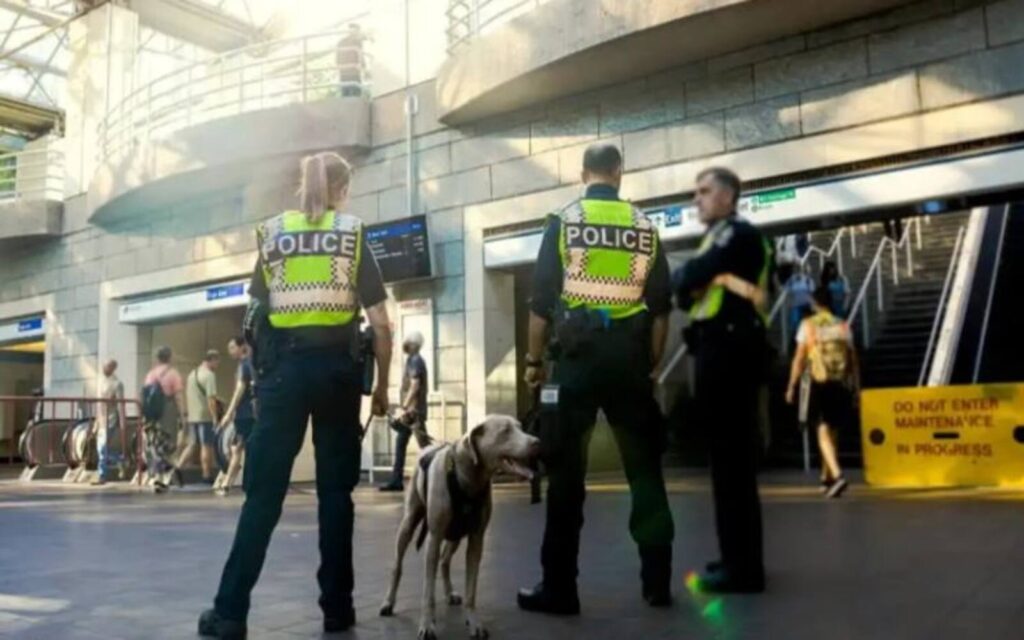
Stay vigilant while using public transit. If you observe anything unusual, promptly report it to a transit staff member or text Metro Vancouver Transit Police at 87.77.77. Standard carrier text messaging rates may apply.
Dial 911 in case of an emergency, defined as:
- Immediate threat to a person or property.
- Ongoing or recently occurred serious crimes, such as a fight, sexual assault, or robbery.
- Immediate suspicion is raised by observations, such as an abandoned package or suspicious behavior by a passenger.
While using public transport in Vancouver, consider these rider guide safety tips:
- Use handrails on escalators or stairs.
- Hold on or sit when the transit vehicle is moving.
- Walk instead of running in stations and exchanges.
- Avoid the electrified SkyTrain tracks; do not venture onto them.
- Avoid using public transport when unwell.
- Minimize face touching, and cough or sneeze into your elbow.
- Apply hand sanitizer both before and after using Vancouver public transport..
Vancouver Public Transport FAQ
Does Vancouver have good public transportation?
Yes, Vancouver have good public transportation with buses, SkyTrain, SeaBus, and West Coast Express, providing convenient options for residents and visitors to navigate the city.
Is the SkyTrain in Vancouver free?
No, the SkyTrain in Vancouver is not free. Passengers need to purchase a valid fare before boarding. The fare system is based on zones and ticket types for seamless travel.
Which SkyTrain goes to Vancouver Airport?
The Canada Line SkyTrain goes to Vancouver Airport (YVR) to the city centre. It provides a quick and convenient transportation option for travelers between the airport and downtown Vancouver.
What modes of transport are available in the Vancouver public transport system?
The modes of transport available in the Vancouver public transport system include buses, SkyTrain (automated rapid transit), SeaBus (ferry service), and the West Coast Express (commuter rail).
How much does Vancouver transit cost?
Vancouver transit costs for adults on the Skytrain, Seabus and bus system all cost $3.15 or $2.55 with a Compass Card.
How do you pay for Vancouver transit?
For Vancouver transit, you can pay by cash, stored value (Compass Card), day pass, monthly pass or tap to pay with a credit card or mobile wallet throughout the Vancouver public transport system.
When does the Skytrain start running?
The Skytrain start running on weekdays at 4:48 am on the Waterfront to YVR Airport, 5:30 am from Waterfront going to the Richmond-Brighouse and 5:07 am from YVR Airport to Waterfront.
When does the Skytrain stop running?
The Skytrain stopped running on weekdays at 1:05 am on the Waterfront to YVR Airport, 1:15 am from Waterfront going to the Richmond-Brighouse and 12:56 am from YVR Airport to Waterfront.
Can you use Skytrain tickets on the bus?
Yes, you can use Skytrain tickets on the bus. You can transfer across the bus, Skytrain and Seabus if you have a Compass Card on a single fare for up to 90 minutes. However, bus transfers received after cash fares are not valid on the Skytrain or Seabus.
Still Have any Questions about the Vancouver Public Transport System?
That covers the essentials of Vancouver’s public transit, but did I overlook anything?
If you still have inquiries about the Vancouver public transport system or need recommendations for Vancouver’s many can’t-miss sites? Feel free to reach out in the comments below.
I’ll respond promptly!
Safe travels 🙂


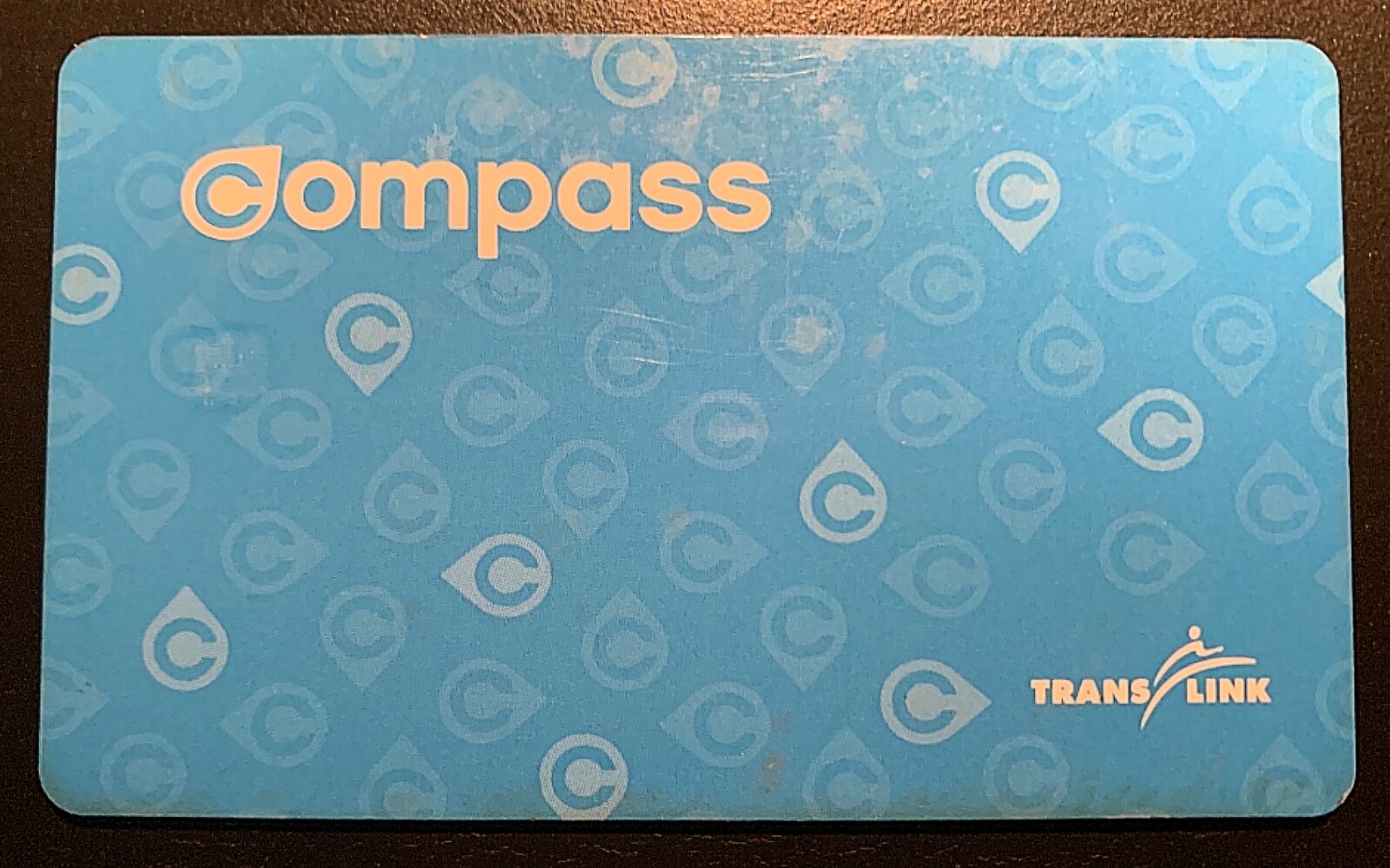



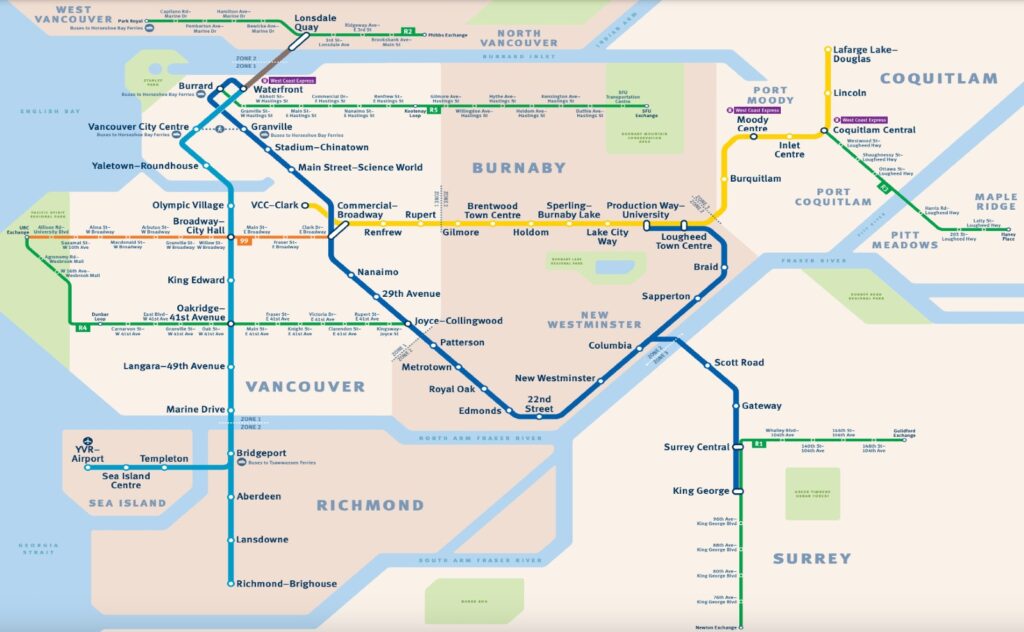


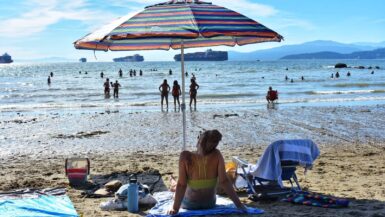
Great information about transport system in Vancouver does this come in a leaflet form .
Hi Catherine,
Unfortunately we haven’t created a leaflet or infographic or anything of the sort, though it is a great idea!
Cheers,
Do I understand correctly? If I get on the bus and pay cash I get a paper ticket valid for 90 minutes on other buses. But if I pay by tapping my debit card at the first bus I need to tap it in the next ones and I’m charged every time?
Hi Magda,
You’ll get a transfer with cash yes. The tapping can only charge once per 90 minutes so you should only be charged once even if you make a transfer.
That said, if you’re here a while just grab a compass card! Much easier, and don’t have to worry about cards being rejected. Some foreign cards don’t work for example.
Cheers,
Hi,
arriving at the airport I intend to use the ferry to Victoria, departing from Tsawassan terminal: Which is the shortest way by public transportation?
Thank you in advance for your feedback.
Regards,
Ingrid
Hi Ingrid,
The trip from YVR to Victoria is done using the BC Ferries Connector – this all in one package avoids taking multiple buses/ferries etc.
Cheers,